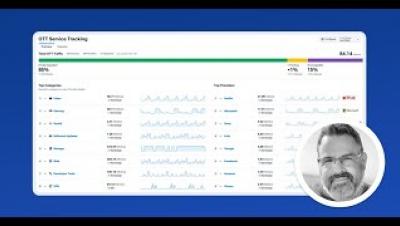Operations | Monitoring | ITSM | DevOps | Cloud
Networks
The latest News and Information on IT Networks and related technologies.
The impact of NWDAF on telco service providers: Embracing vendor agnostic data analytics
Network Data Analytics Function (NWDAF) is a key component in 5G networks, designed to collect, analyze, and deliver valuable insights to service providers. NWDAF provides an unbiased, vendor-vendor agnostic view of the network, expanding telco visibility beyond traditional use cases. As network complexities grow, service providers require unbiased and accurate data to make informed decisions, driving the demand for vendor agnostic data analytics.
All you need to know about Software Defined Cloud Interconnects
What Can Network Automation Do for You?
You probably have been hearing a lot about automation and artificial intelligence (AI) these days, with a vision of some kind of AI-driven world that will take all of our jobs away. The reality is that there’s always too much work to do. AI and automation are more likely to help people get their jobs done more efficiently rather than take them away. Basic automation can have large returns for the network – and improve the quality of work.
What is Cloud Network Monitoring & How it Ensures Sky-High Network Performance
Enhance network monitoring with the latest AI-powered features in OpManager
Network monitoring is a challenging job because networks continue to evolve to meet ever-changing client requirements. Businesses today heavily depend on their networks, and even a short outage can lead to penalties and lost profits. This is why your monitoring tool must also transform itself to not only scale as you grow but offer new features that address new challenges posed by the increasing usage demands placed on your network.
Kentik OTT and CDN Analytics
Full Overview: Reducing Web Server Logs (ex.NGINX)
How to Reduce the Volume of NGINX Logs
A gentle introduction to XDP
XDP, or eXpress Data Path, is a Linux networking feature that enables you to create high-performance packet-processing programs that run in the kernel. Introduced in Linux 4.8 and built on extended Berkeley Packet Filter (eBPF), XDP provides a mechanism to process network packets earlier and faster than is possible through the kernel’s native network stack. In this post, we’ll discuss.











